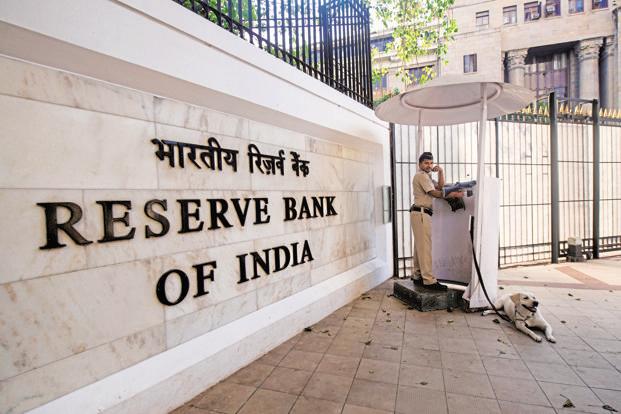Hours after the Reserve Bank of India (RBI) freed savings bank rate last week, Yes Bank Ltd raised the rate by 2 percentage points and Kotak Mahindra Bank Ltd followed suit over the weekend. No other banks have responded yet to this move, but many fear there will be a rate war to woo savings bank depositors. If indeed that happens, consumers will benefit and banks’ cost of funds will rise. This will affect their net interest margin, or the difference between the cost of funds and earnings on the deployment of funds, the key to their profitability.
Since Yes Bank has only about Rs 700 crore worth of savings deposits, which is less than 2% of its total deposits, a 2 percentage point hike in rate will raise its interest cost by Rs 14 crore a year. At this point, the Indian banking industry has a deposit base of Rs 56.25 trillion and roughly 22% of this, or Rs 12.38 trillion, is saving bank deposits. If all banks raise their savings bank deposit rate by an identical margin, the annual cost for the industry will be Rs 24,760 crore. Even if they decide to raise the rate by 1 percentage point, the interest cost will go up by Rs 12,380 crore, about 20% of the industry’s net profit in fiscal 2011. Will that happen?
A savings account is the most common operating account for individuals and others for non-commercial transactions—a hybrid of current account and term-deposit account, providing the convenience of easy withdrawals, writing of cheques and an avenue to park short-term funds that earn interest. Banks generally put a ceiling on the total number of withdrawals permitted and stipulate a certain minimum balance to be maintained in such accounts.
In the past decade, the composition of savings accounts has not changed and the household sector continues to have a share of about 85% of such deposits despite a reduction in interest rates. This essentially means that even though the average inflation rate is higher and the real return from savings accounts is negative, Indian households continue to keep money in such accounts. This helps banks lower their average cost of money and this is why the focus of all banks has all along been to push up the proportion of current and savings accounts in their overall deposit portfolios. Banks do not pay any interest on current accounts.
The savings account rate was last changed in April, after a gap of eight years, and raised from 3.5% to 4%. Until the fiscal 2010, the average cost for banks for such accounts was even lower—at around 2.8%—because they used to pay interest only on the minimum balance kept between the 10th and the end of a month. From April, they have been paying interest rate on a daily average basis.
Regulations of deposit rates came into being from September 1964 and before that the rates were governed by voluntary agreements between large public sector banks and foreign banks operating in India. The only exception was a short period of six months, between September 1960 and February 1961, when RBI regulated the interest rates of deposits up to 14 days. Eight years later, in September 1969, RBI banned interest payment on current accounts and deposits of up to 14 days. From 1979 onwards, almost all deposit rates were administered.
In April 1992, banks were given the freedom to fix interest rates on term deposits of 46 days to three years and more within the ceiling prescribed by RBI. In October 1995, the deposit rate structure was made more flexible by giving banks the freedom to fix rates on domestic term deposits over two years, and finally in October 1997 interest rates on term deposits were completely deregulated. In April 1998, the minimum maturity of term deposits was reduced from 30 days to 15 days and it dropped further to seven days in 2002, only for wholesale deposits of at least Rs 15 lakh. Now even retail customers can keep any amount for seven days.
Savings bank deposit was the last bastion of administered rates in Indian banking. Non-resident Indian deposits are the only other banking product that offer mandated rates, but they are related to the external sector and till India embraces capital account convertibility, they will probably continue to be regulated as RBI would need to have the lever to regulate the foreign money flow.
RBI first seriously explored the option of freeing the savings bank rate in 2006, but couldn’t in the face of stiff resistance put up by the national bankers’ lobby, the Indian Banks’ Association. Will the Yes Bank move trigger a rate war and shake the system? I am not sure about that. When rates were freed for term deposits, which account for about 65% of the overall deposits, there was no shake-out in the system. One can argue that competition was less intense at that time but the counter-argument is that the banking system is more mature now.
Not too many banks are expected to match the Yes Bank offer as they are not as starved of savings bank deposits as Yes Bank is, but one thing for sure is that they will be forced to innovate. Consumers will gain little extra interest income now when inflation is high, but at the cost of convenience as banks will try to limit the number of transactions and other peripheral stuff such as accounts statements and cheque books, etc., for low-value customers to cut cost. They will also discourage branch visits of customers as the cost per transaction in a bank branch is the highest. Alternative channels such as automated teller machines, Internet banking and phone banking will be encouraged to lower cost of transactions. Finally, freeing of savings bank accounts will encourage foreign and new private banks to enter rural India, the traditional stronghold of state-run banks, to raise relatively cheap money.



